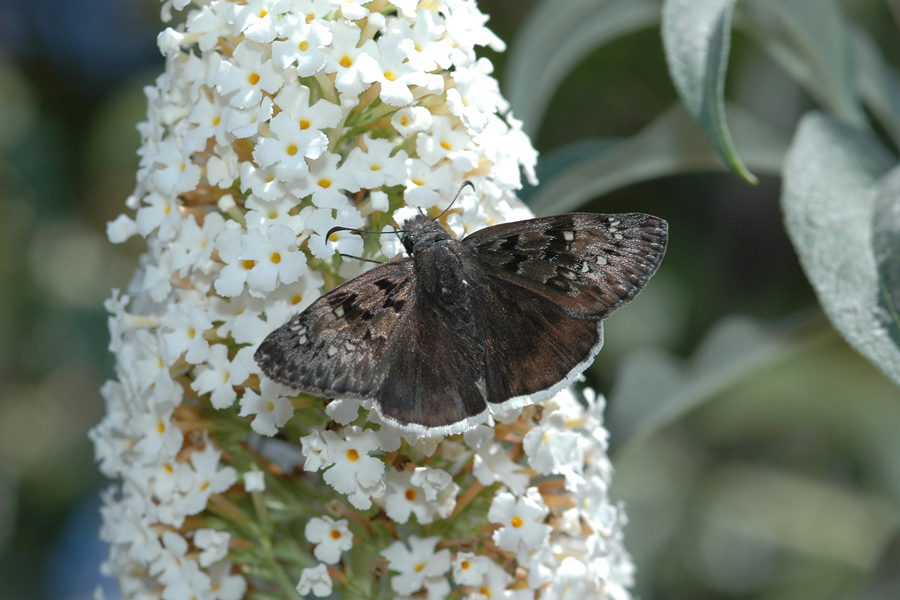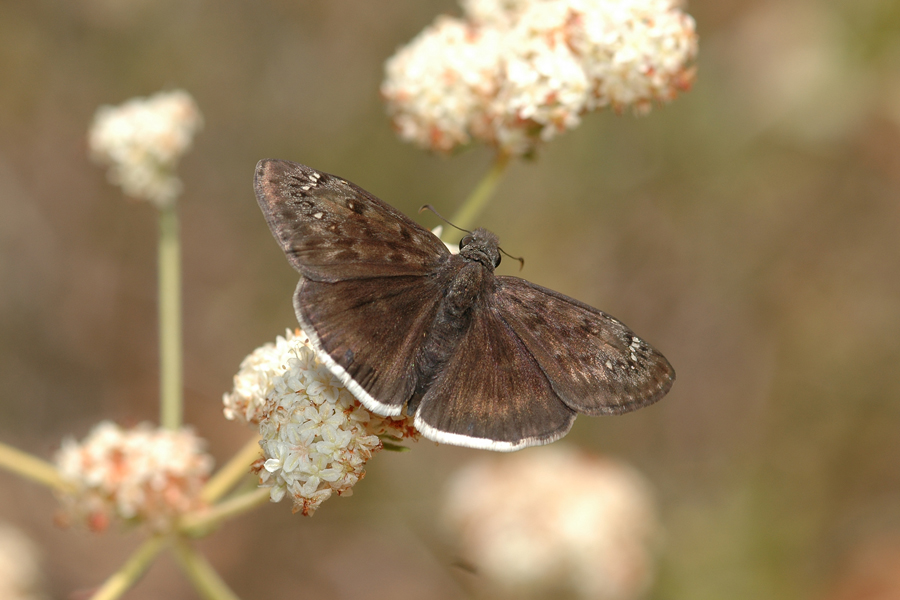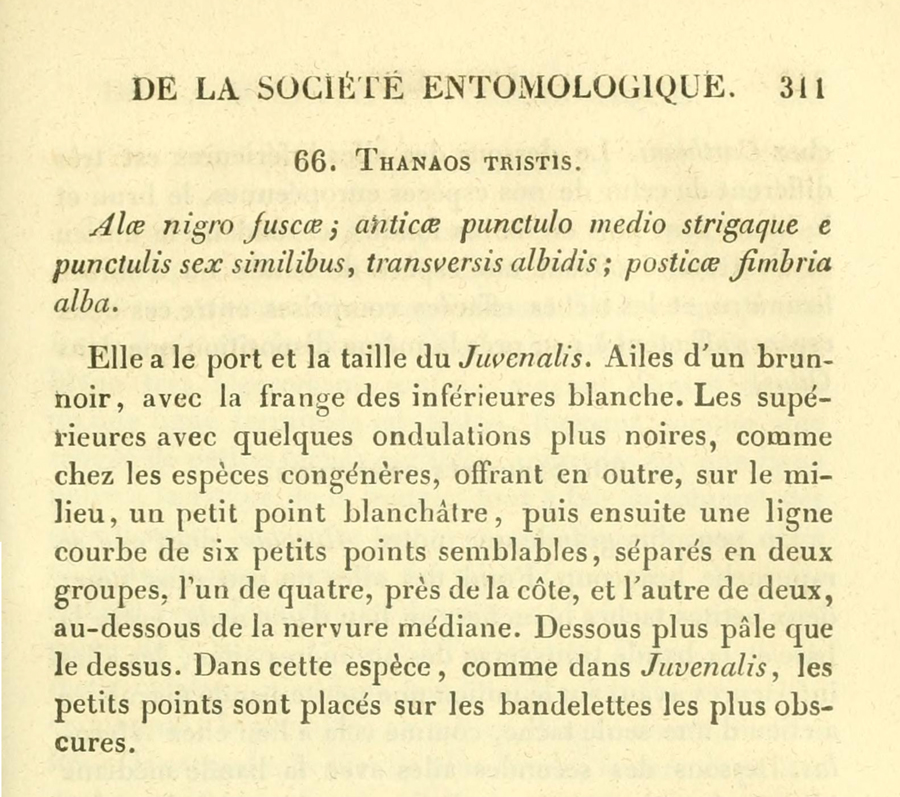Gesta tristis tristis
Mournful Duskywing
The mournful duskywing is one of the two duskywings in our area with white hind wing fringes, the other being the funereal. They are similar, such that one may have to resort to certain clues to reach a decent identification. Most importantly, funeralis uses Fabaceae-family plants such as deerweed as their larval food plants, while tristis only uses oaks. In our area, that generally means coast live oak Quercus agrifolia and interior live oak (Q. wislizeni). The Emmels (1973) also mention blue oak (Q. douglasii), and valley oak (Q. lobata), which range from about the latitude of Santa Barbara to the north for the most part, while coast and interior live oaks hug the coast all the way down to the Mexican border. So if you see a skipper with white fringe interested in an oak tree's leaves, it may be a female tristis, while a female funeralis is only going to oviposit on legumes. For males, there is a genitalic difference, which is of no help to most people, but there is this tip from Gordon Pratt: male mournful duskywings hilltop to await females, while funereal males do not hilltop. Whether the lighter patch of scales on the forewing near the hyaline spots is a dependable field mark is uncertain. So the identifications below are my best efforts, but I don't pretend to be absolutely certain.
Females lay eggs singly on tender young oak leaves. Caterpillars make shelters in the oak leaf, cutting a small flap when they are small, and often silking two leaves together when they are mature. They feed outside the shelter. When fully fed, they pupate in this leaf shelter as well.


